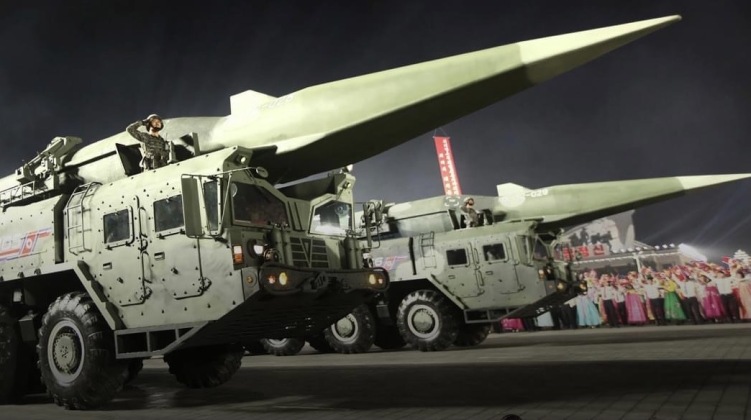News
After Solid Fuel ICBM Successes North Korea Testing Similar Engine For ‘Guam Killer’ Tactical Missiles

North Korea has begun ground testing of the first and second stage engines for its first known class of solid fuel intermediate range ballistic missile, according to a report from the state run Korean Central News Agency on November 15. “The missile industry of the DPRK has developed new-type high-thrust solid-fuel engines for intermediate-range ballistic missile again, which are of important strategic significance,” the report stated, adding that both “were very successful.” The first and second stage engines saw their first tests conducted on November 11 and November 14 respectively, which “provided a sure guarantee for reliably accelerating the development of the new-type IRBM system.” Progress developing a solid fuelled intermediate range ballistic missile follows the successful development of the country’s first solid fuelled intercontinental range ballistic missile, the Hwasong-18, which was successfully tested on April 13, 2023 and again on July 12.
North Korea inducted its first solid fuelled ballistic missile class into service in the mid-2000s, with the Hwasong-11 designed based on studies of the relatively basic Soviet 9K79 Tochka missile which was thought to have been provided by Syria. New solid fuelled ballistic missiles began to enter service from the late 2010s, including the Pukkuksong-1 and Pukkuksong-2 medium range ballistic missiles capable of striking American bases across Japan, followed by the KN-23 and KN-24 short range missiles. Intermediate range missiles thus remain the last major class not to have seen solid fuelled missiles developed. Solid fuelled missiles have much shorter launch times, which is particularly valuable due to North Korea’s deployment of its arsenal from mobile launchers and reliance on mobility for survivability. Use of solid fuel composites allows missiles to be stored fully fuelled, which is invaluable in wartime situations and creates much greater challenges to enemy efforts to neutralise arsenals on the ground.

For North Korea the primary role of its intermediate range ballistic missile arsenal is to provide options for strikes against American military facilities on Guam, which serves as a key hub for naval, air and increasingly for marine operations across East Asia. The country first gained a reliable capability to strike targets on the island in 2016 with the Hwasong-10 which was followed by the induction of the Hwasong-12 in 2017. Where the country’s first ICBM to enter service the Hwasong-14 is thought to have seen its engine derived from that of the Hwasong-12, the Hwasong-12’s solid fuelled successor is likely to have its engine derived from that of an ICBM, the Hwasong-18, rather than vice versa. North Korea has also made notable progress developing hypersonic glide vehicles for medium range ballistic missiles, raising the significant possibility that the solid fuelled missile which the new engines are being developed for will integrate such vehicles. This would provide an invaluable capability to bypass the increasingly dense air defences being deployed on Guam. With North Korea and the United States remaining officially in a state of war, the ability to neutralise American bases across East Asia has for decades been highly prized by defence planners in Pyongyang, particularly due to the historical memory of the Korean War when bases across East Asia used for attacks on Korean territory were far beyond the reach of retaliatory strikes.












